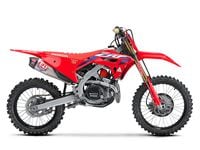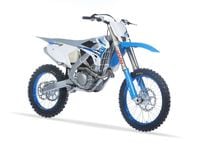In part 5 of Nick Fahringer’s series on tackling extreme terrain, the hard enduro expert demonstrates the uphill pivot turn—a must-know technique for riding your dirt bike up steep, relentless uphills. In fact, the FactoryOne Sherco rider says you can’t compete in an event like Romaniacs unless you are proficient at pivot turns, so here’s his take on the technique.
Pro Riding Tip—Uphill Pivot Turns With Nick Fahringer
An essential hard enduro skill for relentless, steep uphills.
/cloudfront-us-east-1.images.arcpublishing.com/octane/7I5WTY5GC5HD5FJAQSFFJXSNSA.jpg)
/cloudfront-us-east-1.images.arcpublishing.com/octane/JCTOW3UR2REN5E43X4NSY7QG6E.jpg)
/cloudfront-us-east-1.images.arcpublishing.com/octane/SE6S4FL5GZDYTCGVHHBD2WLJRA.jpg)
/cloudfront-us-east-1.images.arcpublishing.com/octane/UJAQZPUQJ5BKZBNXEGBKFNRMBA.jpg)
/cloudfront-us-east-1.images.arcpublishing.com/octane/PSPAIN77JNBVFN42UT4UR6SFBU.jpg)
/cloudfront-us-east-1.images.arcpublishing.com/octane/BZOFBHJS4FEINH5LGU7H2IDOZU.jpg)
/cloudfront-us-east-1.images.arcpublishing.com/octane/XXNQVQXSI5BFRC2IP2QC5YZ5D4.jpg)
/cloudfront-us-east-1.images.arcpublishing.com/octane/5GNZUHLUQZB37G6YOQEQNQ6VUI.jpg)
/cloudfront-us-east-1.images.arcpublishing.com/octane/2RSCK6OA7VGAPNNIV3PRFSIYEU.jpg)
/cloudfront-us-east-1.images.arcpublishing.com/octane/TBIAOTHQEVAWRH4RI6QHPUO5PY.JPG)
/cloudfront-us-east-1.images.arcpublishing.com/octane/OB2TZF3FIBDZHHYHJZ6LRHR3S4.jpg)
/cloudfront-us-east-1.images.arcpublishing.com/octane/DZ2HBSSXKBEZLGE574PHVN4WYI.jpg)
/cloudfront-us-east-1.images.arcpublishing.com/octane/5BWOS5DC5FHHPHLVU43RSA5BTE.jpg)
/cloudfront-us-east-1.images.arcpublishing.com/octane/I3MFYOGNRFG3TPJQ6S7DHVCCQM.jpg)
/cloudfront-us-east-1.images.arcpublishing.com/octane/6LEF2ZUVXFB3ZFYRIP7LI5TZSQ.jpg)
/cloudfront-us-east-1.images.arcpublishing.com/octane/XXYEOEIX6FASTJCWHM5354VR5Q.jpg)
/cloudfront-us-east-1.images.arcpublishing.com/octane/NJWIDU775NECBOSYOGESM6OIMY.jpg)


/cloudfront-us-east-1.images.arcpublishing.com/octane/322NRYLOUVD2FP72XICUQDEUTY.jpg)
/cloudfront-us-east-1.images.arcpublishing.com/octane/TT7Y2HUFOFF3RK4BQBMIFR7WGU.jpg)
/cloudfront-us-east-1.images.arcpublishing.com/octane/M23QJHVQ2ZDYPH5FZCBQJ2KXLA.jpg)
/cloudfront-us-east-1.images.arcpublishing.com/octane/HHQFFZYU6FFHTFSQRMPPYT35HU.jpg)
/cloudfront-us-east-1.images.arcpublishing.com/octane/7FCUDZHB3JBIHDW72FQBWIMBAU.jpg)
/cloudfront-us-east-1.images.arcpublishing.com/octane/X2C5PKAJAVDDXK6HNVQXT2Z6EE.jpg)


/cloudfront-us-east-1.images.arcpublishing.com/octane/54CMCACP5NAOZAFY2PJ3P4VLKM.jpg)
/cloudfront-us-east-1.images.arcpublishing.com/octane/BH3XMANK2VG5LA2XRDBBHMK4BE.jpg)